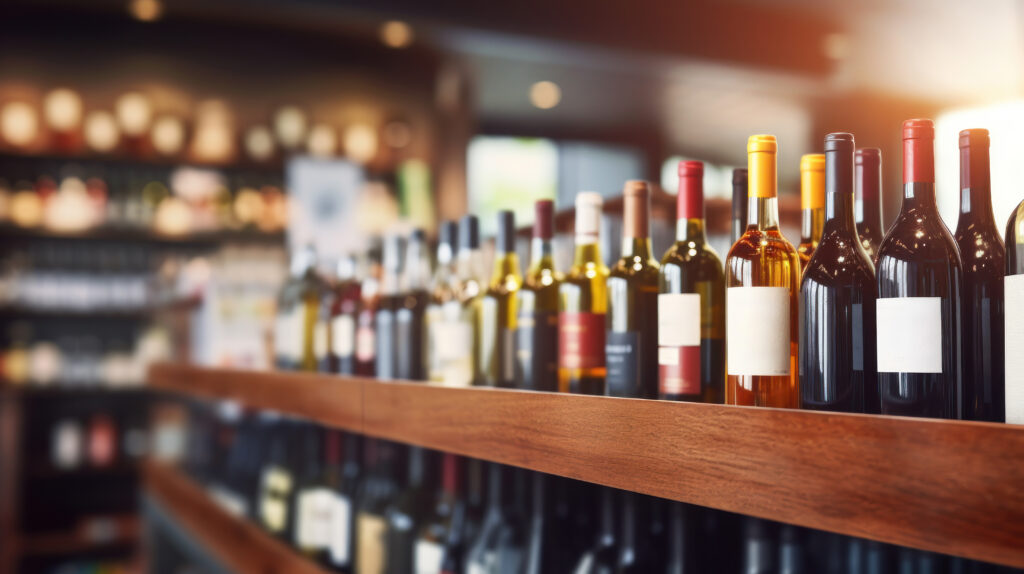Geschäftsplanung und -strategie, Finanzmodelle
Spirituosengeschäft: Kosten, Umsatzpotenzial und Rentabilität
Ein Spirituosengeschäft ist in einem regulierten, umsatzstarken Verbrauchersegment tätig, in dem die Rentabilität von Kategorie-Margenoptimierung, Bestandsgeschwindigkeit, Und Betriebseffizienz. Obwohl die Bruttomargen je nach Produktlinie variieren, machen starker Cashflow und wiederkehrende Kunden dieses Modell attraktiv. Der Erfolg wird durch Sortimentsdisziplin, Hebelwirkung der Anbieter, Und strenge Kostenkontrolle, insbesondere in Rechtsräumen mit starker Lizenzvergabe.
Asset-Konfiguration
Die Investitionsausgaben sind moderat, wobei der Schwerpunkt auf Regalen, Kühlhäusern und Sicherheitsinfrastruktur liegt. Ein typisches Geschäft umfasst 800 bis 2.500 Quadratfuß., mit zusätzlicher Lagerung je nach Volumen und Lieferaktivität.
| Anlagekategorie | Kostenspanne (USD) | Hinweise |
|---|---|---|
| Regale, Gestelle, Kühlvitrinen | 30.000 bis 60.000 | Wandregale, Gondeln, Markenkühlschränke |
| POS, Inventar und ID-Verifizierung | 5.000 bis 10.000 | Alterskontrollsysteme, CRM, Werbeaktionen |
| Sicherheits- und Überwachungsausrüstung | 10.000 bis 20.000 | Kameras, Diebstahlschutz, bruchsicheres Glas |
| Branding, Oberflächen, Beschilderung | 10.000 bis 20.000 | Schaufensterdekoration, Beleuchtung, Visual Merchandising |
| Eröffnungsbestand | 150.000 bis 300.000 | Spirituosen, Wein, Bier, RTDs, Zubehör |
Gesamtkapitalaufwand: 205.000 bis 410.000 USD, hauptsächlich getrieben durch Inventar und Einrichtungsgegenstände. Staatliche Lizenzen und Genehmigungen variieren, können aber hinzufügen 5.000 bis 20.000 USD im Voraus.
Erlösmodell
Der Umsatz basiert auf Transaktionen, wobei die durchschnittliche Warenkorbgröße zwischen 25 bis 60 USD, je nach Markt und Sortiment. Wichtige Margentreiber sind Eigenmarken, limitierte Veröffentlichungen, Und Mehrwertverpackung (z. B. Geschenkboxen, Probierpackungen). Die Zahl der wiederkehrenden Kunden ist hoch, insbesondere bei Bier- und Weinkäufern.
Jährliches Umsatzpotenzial für einen 140 m² großen Spirituosenladen in der Nachbarschaft
| Einnahmequelle | Volumenannahme | Jahresumsatz (USD) |
|---|---|---|
| Spirituosen (Whisky, Wodka, Rum usw.) | 25.000 Transaktionen zu durchschnittlich 40 USD. | 1,000,000 |
| Wein | 15.000 Transaktionen zu durchschnittlich 30 USD. | 450,000 |
| Bier und RTDs | 20.000 Transaktionen zu durchschnittlich 25 USD. | 500,000 |
| Zubehör, Mixer, Geschenkpakete | 1.000 pro Woche im Durchschnitt. | 52,000 |
| Online-Bestellungen und lokale Lieferung | 1.200 pro Woche im Durchschnitt. | 62,400 |
| Gesamt | 2,064,400 |
Städtische Geschäfte mit hohem Kundenverkehr und hoher Produktrotation können 3,5 Millionen USD jährlich. Vorortverkaufsstellen mit geringem Durchsatz und ohne Lieferunterstützung bleiben oft unter 1,2 Millionen USD.
Betriebskosten
Die Herstellungskosten variieren je nach Kategorie: Bier hat eine niedrige Marge, Spirituosen sind teurer und Zubehör hat die besten Aufschläge. Der Personaleinsatz ist gering, aber Sicherheit, Schwund und Compliance-Überwachung sind entscheidend. Der Bestand muss streng kontrolliert werden, um die Bindung von Geldern in Lagereinheiten mit geringer Umschlagshäufigkeit zu vermeiden.
| Kostenkategorie | Jährliche Kostenspanne (USD) |
|---|---|
| Kosten der verkauften Waren | 1.150.000 bis 1.250.000 |
| Personallöhne und Gehaltsabrechnung | 180.000 bis 220.000 |
| Miete, Nebenkosten, Versicherung | 160.000 bis 200.000 |
| Marketing, Loyalität, Öffentlichkeitsarbeit | 60.000 bis 80.000 |
| Sicherheit, Lizenzen, Compliance | 45.000 bis 65.000 |
| Schwund, Verschütten, Abschreibungen nach Ablauf der Haltbarkeitsdauer | 25.000 bis 40.000 |
| POS, CRM, Verwaltung, Technik | 20.000 bis 30.000 |
| Gesamtbetriebskosten | 1.640.000 bis 1.885.000 |
EBITDA = 2.064.400 – 1.640.000 bis 1.885.000 = 179.400 bis 424.400 USD
EBITDA-Marge = 8,7% bis 20,6%
Gut geführte Geschäfte mit einem starken Eigenmarken-Mix, strenger Kostenkontrolle und guter Lieferung können konstant Margen von etwa 15 bis 20 Prozent halten. Unteroptimierte Geschäfte mit geringem Lagerumschlag oder mangelnder Compliance laufen Gefahr, in den einstelligen Bereich zu fallen.
Rentabilitätsstrategien
Die Rentabilität im Spirituoseneinzelhandel hängt ab von Kategorie-Margenstapelung, Durchsatzgeschwindigkeit und Lizenzierungsdisziplin.
Beginnen Sie mit Sortimentsstaffelung. Nutzen Sie schnelllebige Marken (z. B. Tito's, Jameson, La Marca), um den Verkehr zu binden, und verkaufen Sie dann Premium- oder Eigenmarkenalternativen mit hohen Margen 20 bis 30 Prozent höher. Begrenzen Sie die SKU-Aufblähung, insbesondere bei Wein und RTDs, und priorisieren Sie Artikel mit einem Umsatz von 60 Tagen oder mehr.
Maximieren Sie die Rentabilität pro Warenkorb durch Produktplatzierung Und Impulsstrategie. Werben Sie für Bundles (z. B. Tequila plus Mixer), präsentieren Sie Artikel mit den höchsten Gewinnspannen auf Augenhöhe und nutzen Sie Bodendisplays für saisonale Rotationen. Zielen Sie auf Zubehör-Anbringungsraten von 20 Prozent oder mehr.
Schützen Sie die Vollpreismargen, indem Sie massive Werbeaktionen vermeiden. Bieten Sie stattdessen exklusive Verkostungen, Treuepunkte oder Vorbestellungen kleiner Mengen. Nutzen Sie die Kooperationsfinanzierung durch Anbieter für Kampagnen und fördern Sie die Auslieferung als margenneutralen Upselling.
Investieren Sie in Altersverifizierung, Compliance-Toolsund digitale Lizenzprotokolle, um Verstöße und Bußgelder zu vermeiden. Diese sind im Alkoholeinzelhandel nicht verhandelbar und sollten proaktiv budgetiert werden.
Überwachen Sie abschließend monatlich Schwund und Bruch. Führen Sie Schulungen zur Verlustverhütung und Produktrotation für veraltete Lagerbestände durch. Legen Sie Nachbestellpunkte und Mindestabverkaufsmengen fest, um die Lagerflexibilität zu gewährleisten.
Na und?
Ein Spirituosengeschäft ist kein Massengeschäft – es ist eine margenorientierte, konformitätsorientierte Lagerhaltungsmaschine. Die Rentabilität hängt davon ab, wie gut der Betreiber das Sortiment kontrolliert, die Produktrotation durchführt und den Wert durch Bündelung und Komfort steigert. Einzelhändler, die eine straffe Kategoriestrategie verfolgen, Premiumpreise verteidigen und Spitzenzeiten im vierten Quartal und an Wochenenden optimieren, können sich behaupten. 9 bis 20 Prozent EBITDA-Margen An über 2 Millionen USD Umsatz, mit Investitionsausgaben unter 410.000 USD.

Denken Sie darüber nach, ein Spirituosengeschäft zu eröffnen? Laden Sie die umfassende Alkohol Vorlage für ein Geschäftsfinanzmodell aus BLÄTTER.MARKT Vereinfachen Sie Ihre Finanzplanung. Mit diesem Tool können Sie Kosten, Einnahmen und potenzielle Gewinne prognostizieren und so die Finanzierung Ihres Spirituosengeschäfts einfacher sichern und den Erfolg planen.



